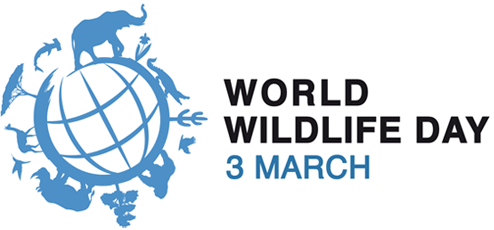
At the sixteenth meeting of the Conference of Parties to CITES in March 2013, the Thai Government recommended the adoption of a resolution to declare March 3 as World Wildlife Day, which was later agreed at the United Nations General Assembly in December. The date marks the anniversary of the adoption of the Convention on International Trade in Endangered Species of Wild Fauna and Flora (CITES), which aims to “ensure that international trade in specimens of wild animals and plants does not threaten their survival”.
Today marks the first ever World Wildlife Day which coincides with a renewed global focus on illegal wildlife trafficking, a US $19 billion trade that includes elephant and rhino poaching, illegal logging and ape theft. According to the International Union for Conservation of Nature (IUCN) wildlife trafficking is considered the fourth largest illegal trade in the world after narcotics, counterfeiting and human trafficking. This has also been reflected in a new study published in Biological Conservation, which suggests that wildlife now serves as “a form of currency” for criminal organizations.
In recent years, action to target illegal trade in wildlife has gained momentum. In December 2013, at the Summit for Peace and Security held in Africa, discussions highlighted how the establishment of terrorist and criminal networks involving poachers and traffickers in endangered species were a threat to peace and security worldwide.
In 2010, INTERPOL, the World Bank, the UN Office on Drugs and Crime, the World Customs Organization and the CITES Secretariat came together and establishd the International Consortium on Combating Wildlife Crime (ICCWC). It’s mission is to ensure that “perpetrators of serious wildlife crimes will face a formidable and coordinated response, rather than the present situation where the risk of detection and punishment is all too low.”
In 2013, the UN Security Council adopted resolution 2127 and resolution 2136, that recognises the linkage between ongoing unrest in Africa and the illegal exploitation of wildlife.
In January 2014, the European Parliament passed a motion for a Resolution on Wildlife Crime, which calls upon the European Commission to introduce measures that would place it on the same level as human and drug trafficking including better prosecution for perpetrators.
Last month, at the London Conference on Illegal Wildlife Trade, a declaration was agreed which set out commitments to reject the use of products from threatened species, address corruption and adopt stricter penalties. Also last month, the US Government announced a near ban on the commercial trade of elephant ivory, reflected in the National Strategy for Combating Wildlife Trafficking.
A number of countries have shown solidarity to the anti-illegal wildlife trade movement as large ivory stockpiles have been destroyed. Although many believe that more action is required.
The WWF reports that there has been a 5000% increase in rhino poaching in South Africa between 2007-2012, with over 900 rhinos poached last year. Much of the demand comes from Asia, in particular Vietnam, where demand has stemmed from rumours that rhino horn can cure cancer.
Demand for elephant ivory remains high in emerging economies such as China. However, as well as poaching, a report from UNEP suggests that elephants are also threatened by loss of habitat predominantly though human population growth and expansion of land use for agriculture.
A study by UNEP claims that a minimum of 22,218 great apes have been removed from the wild having either been sold, killed during hunting or dying in captivity since 2005, with demand arising from the tourism industry, some zoo’s and individuals keeping them as pets.
For World Wildlife Day, WWF has highlighted other species that remain vulnerable to the wildlife trade, including Pangolins, Parrots, Freshwater Turtles, Arowana and Bluefin Tuna to show that it is not only elephants, rhino’s and tigers that are being targeted by wildlife traffickers.
References
Douglas, L.R., Alie, K. High-value natural resources: linking wildlife conservation to international conflict, insecurity, and development concerns. Biol. Conserv. (2014),
UNEP – Elephants in the Dust – The African Elephant Crisis
UNEP – Stolen Apes – The Illicit trade in Chimpanzees, Gorillas, Bonobos and Orangutans
Related articles
Related News & Blogs
Illegal wildlife trade, it’s not all rhinos and elephants
Global cooperation is needed to reduce the trade in illegally collected plants (Stokpic Via Pixabay) This month London hosted an international conference on Illegal Wildlife Trade, highlighting fresh commitments and funding to reduce international trad…
26 October 2018







